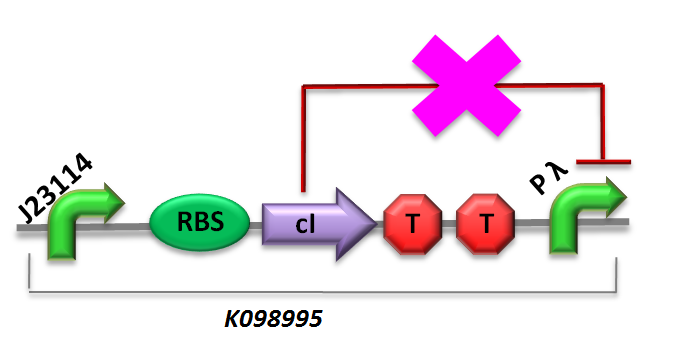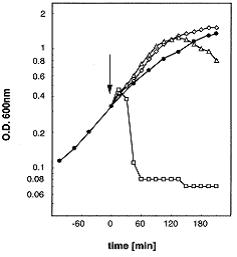Team:Imperial College London/Temporal Control/Thermoinduction/System
From 2009.igem.org

The Thermoinduction system
Gene expression of the lambda promoter is strongly inhibited at 28°C due to transcriptional repression by the cI857 repressor.
When the temperature is raised, typically to 42°C as shown in literature, the structure of the temperature-sensitive cI857 repressor is destabilised, so it loses its repressor function. The lambda promoter is now able to express its downstream genes.
Thermoinduction has been used commonly in lysis plasmids. Expression of a cell lysis gene E is kept under the control of thermoinduction, and is consequently grown at 28°C. Bacteria cell lysis is then induced by an upshift of the temperature to 42°C.
The thermoinduction system has been combined with restriction enzymes so as to allow for the safe production of restriction enzymes. At 28°C, the restriction enzymes are expressed at a low level, so that when used together with a methylation system they would not be toxic to the cell. When the temperature is raised, there will be overproduction of restriction enzymes and cell death.
After encapsulation (Module 2), when the cell has been encapsulated in colanic acid, it becomes more difficult for chemical inducers to infiltrate the outer protective layer. In this case, heat is an ideal way to circumvent this problem and achieve effective industrial processing. The cI857 thermoinduction system has recently been tested by Harvard 2008, but the results have not been convincing. We have decided to reuse thermoinduction as it is particularly relevant to our project.

References
Template:FormatRef - Graph and Lysis E
Template:FormatRef- cI857
Template:FormatRef- Thermoinduction used with Restriction Enzymes
 "
"





